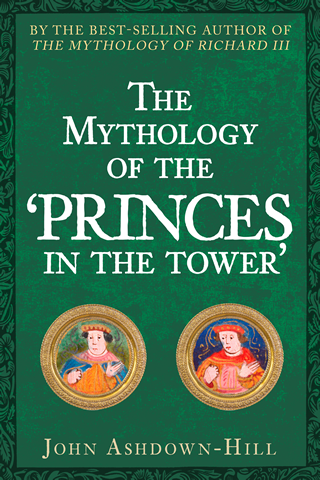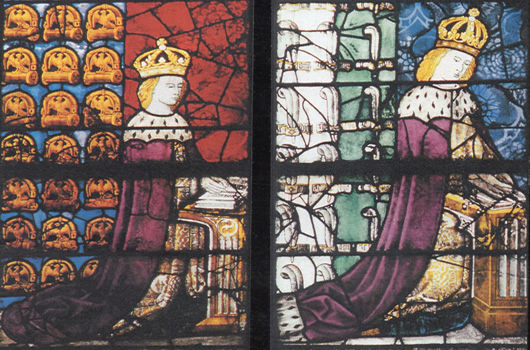Domenico Mancini: de occupatione regni Anglie New Translation with Introduction and Historical Notes (Imprimis Imprimatur, 17 February 2021) by Annette Carson
The Mancini report, penned in 1483, is one of the most crucial accounts of the brief few months when Richard III came to power. Written in Latin, it was originally translated in the 1930s when historians were unanimous in putting the worst construction on all Richard’s actions. Happily a new translation by acclaimed historical biographer Annette Carson (2021) goes back to the original manuscript and its meaning, placing the text into modern, readable English without the negative weighting.
Domenico Mancini was an agent of the French court, sent to London to gain intelligence at a time when the French had boldly shattered a long-standing truce with England. And by sheer coincidence, he was present to report what he understood of the events that put Richard III on the throne, remaining until early July about the time of his coronation.
Coming from a hostile background, Mancini’s narrative is injected with an anti-English spin. There’s plenty of ingrained bias that disparages England’s Yorkist royals, underlined by personal editorial commentary, usually judgemental. However, there’s much useful material in his reportage of the ‘London street’, reflecting what he’s been told or picked up from locals. He gives glowing depictions of how Richard is widely respected, until a Woodville take-over demotes him and (in Mancini’s view) sets him along a path where he goes for an all-out power-grab. Readers who know their history will spot where Mancini gets several known facts wrong; indeed, his opening paragraphs are full of apologies for lapses in completeness and relevant details, which readers can find supplied by Carson’s extensive Historical Notes.
For The Missing Princes Project, Mancini is a key source of information confirming that the princes were certainly resident in the Tower of London until early July 1483 at least. Even more importantly, when he sat writing his report in France (1 December 1483), he declared that he’d been unable to discover anything about their fate – which clearly was an important fact he’d been trying to ascertain ever since leaving London.
Domenico Mancini: de occupatione regni Anglie (ed. Annette Carson). Available here.
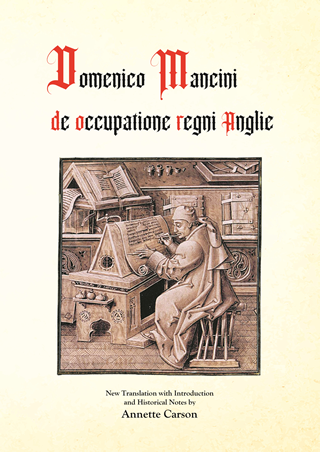
Richard Duke of Gloucester as Lord Protector and High Constable of England (Imprimis Imprimatur, 29 May 2015) by Annette Carson
Until now traditionally misrepresented, his office as Lord Protector has been poorly understood owing to an over-reliance on foreign reporters ignorant of the precise significance of this very English institution. Of equal importance, and equally disregarded, is his concurrent office as Lord High Constable of England, vested with military and judicial authority on behalf of the crown. This study reviews the development of both offices and their constitutional legitimacy in Gloucester’s hands and changes what we know about the events of 1483.
Richard Duke of Gloucester was appointed Lord Protector in May 1483. He had already been appointed High Constable for life in 1469 and had held the position for over 13 years. Thus he combined the power to identify and suppress rebellion (as Protector) with the power to take summary legal action against treason in his own court (as Constable) under the Law of Arms.
For all those wishing to fully understand the events of 1483, this acclaimed work is a must-read.
Richard Duke of Gloucester as Lord Protector and High Constable of England by Annette Carson. Available here.
Annette Carson is a non-fiction author specializing in history and biography. A member of Philippa Langley’s Looking For Richard Project, she has also contributed to The Missing Princes Project. Among her books are five dedicated to Richard III’s life and reign, including Richard III: The Maligned King (2008, 2013, 2023) and A Small Guide to the Great Debate (2013).
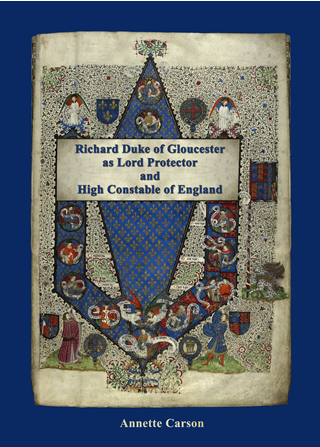
The Survival of the Princes in the Tower (The History Press, 2017) by Matthew Lewis
‘The Murder of the Princes in the Tower is the most famous cold case in British history. Traditionally considered victims of a ruthless uncle, there are other suspects too often and too easily discounted. There may be no definitive answer, but by delving into the context of their disappearance and the characters of the suspects, Matthew Lewis examines the motives and opportunities afresh as well as asking a crucial but often overlooked question: what if there was no murder? What if Edward V and his brother, Richard, Duke of York survived their uncle’s reign and even that of their brother-in-law, Henry VII? There are glimpses of their possible survival and compelling evidence to give weight to those glimpses, which is considered alongside the possibility of their deaths to provide a rounded and complete assessment of the most fascinating mystery in history.’
‘The Princes are like black holes in history. They represent the conspicuous lack of, well, anything. Black Holes, though, exert a gravitational influence on their surroundings that offer hints of their presence. The Princes in the Tower can be viewed in the same way. If we cease to only look for definitive evidence of their fates and widen our view to encompass those who might be affected by that fate, it is possible to see intriguing hints of an unseen force at work.’ Matthew Lewis.
Matthew Lewis graduated in Law from the University of Wolverhampton. An historian and podcaster, he is the former Chair of the Richard III Society.
Matthew is also the author of a number of seminal works on Richard III and the Wars of the Roses including: Richard III: Loyalty Binds Me (2018), Richard III: Fact and Fiction (2019), The Wars of the Roses: The Key Players in the Struggle for Supremacy (2016), The Survival of the Princes in the Tower (2017). Matthew has also published a number of guides for younger readers to get started: A Glimpse of the Wars of the Roses (2013), A Glimpse of Richard III (2013).
For those interested in the figure known as ‘Lambert Simnel’ – the claimant to Henry VII’s throne in 1486-7 - please also visit:
https://mattlewisauthor.wordpress.com/2018/07/24/lambert-simnel-and-edward-v/.
You can also read Matthew’s 2018 article here.
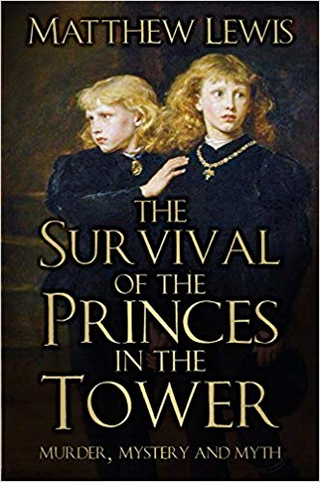
The Mythology of the ‘Princes in the Tower’ (Amberley Publishing, 2018) by Dr John Ashdown-Hill
‘When did the term ‘Princes in the Tower’ come into usage, who invented it, and to whom did it refer? To the general public the term is synonymous with the supposedly murdered boy King Edward V and his younger brother Richard, Duke of York, sons of Edward IV. But were those boys genuinely held against their will in the Tower? Would their mother, Elizabeth Widville, have released her son Richard from sanctuary with her if she believed she would be putting his life in danger?
The children of Edward IV were declared bastards in 1483 and Richard, Duke of Gloucester, was offered the throne. But after Bosworth, in order to marry their sister Elizabeth of York, Henry VII needed to make her legitimate again. If the boys were alive at that time then Edward V would once again have become the rightful king.
Following the discovery of some bones in the Tower in 1674 they were interred in a marble urn in Westminster Abbey as the remains of the two sons of Edward IV. What evidence exists, or existed at the time, to prove these indeed were the remains of the two fifteenth-century male children? What did the 1933 urn opening reveal?
John Ashdown-Hill is uniquely placed to answer these question. By working with geneticists and scientists, and exploring the mtDNA haplogroup of the living all-female line collateral descendent of the brothers, he questions the orthodoxy and strips away the myths.’
Dr John Ashdown-Hill (1949-2018) was Honorary Senior Lecturer at the University of Essex, History Department, a Fellow of the Society of Antiquaries and a key member of the Looking For Richard Project.
